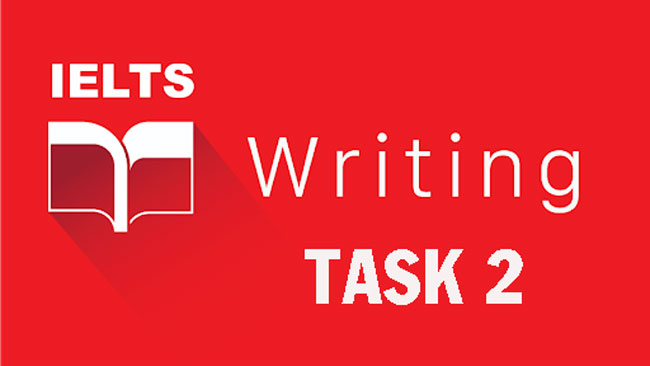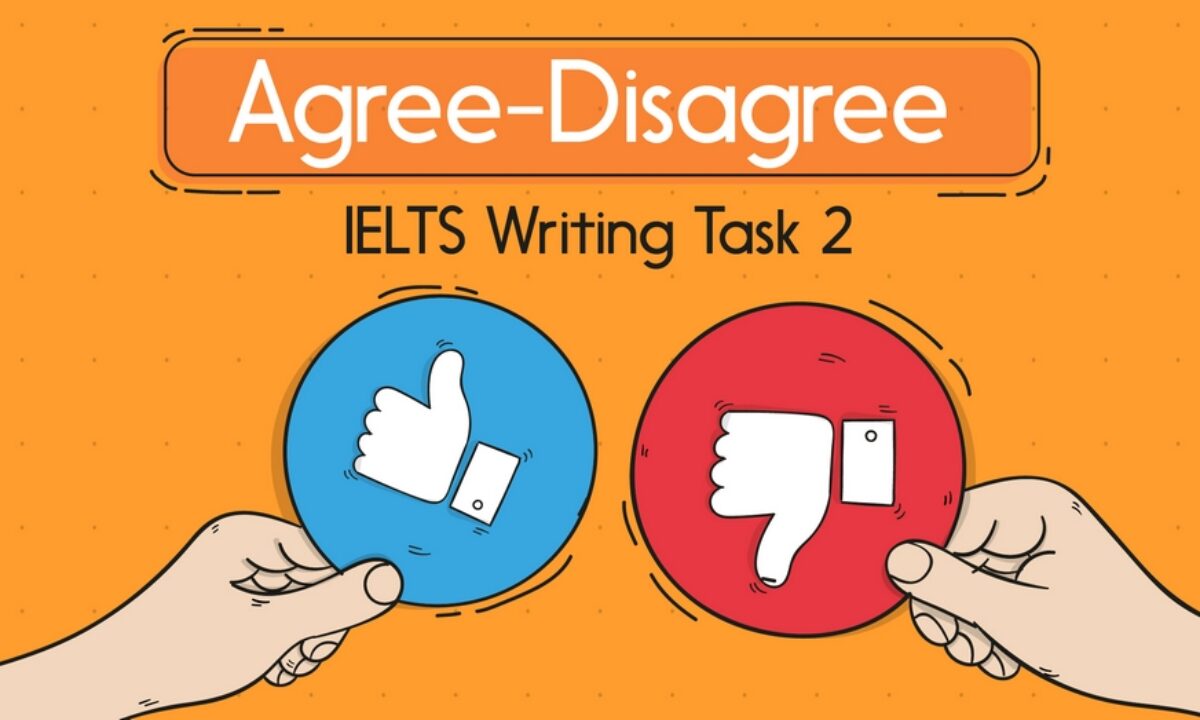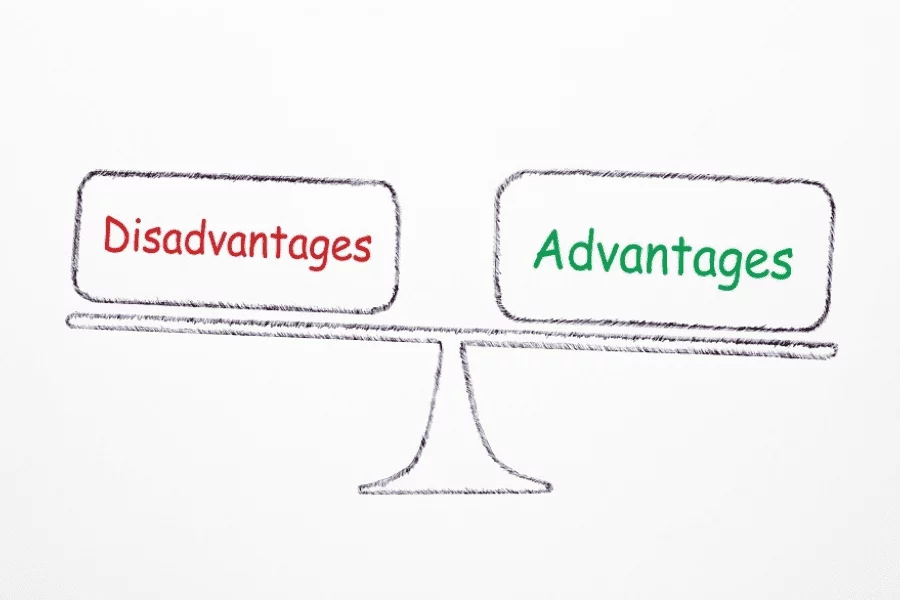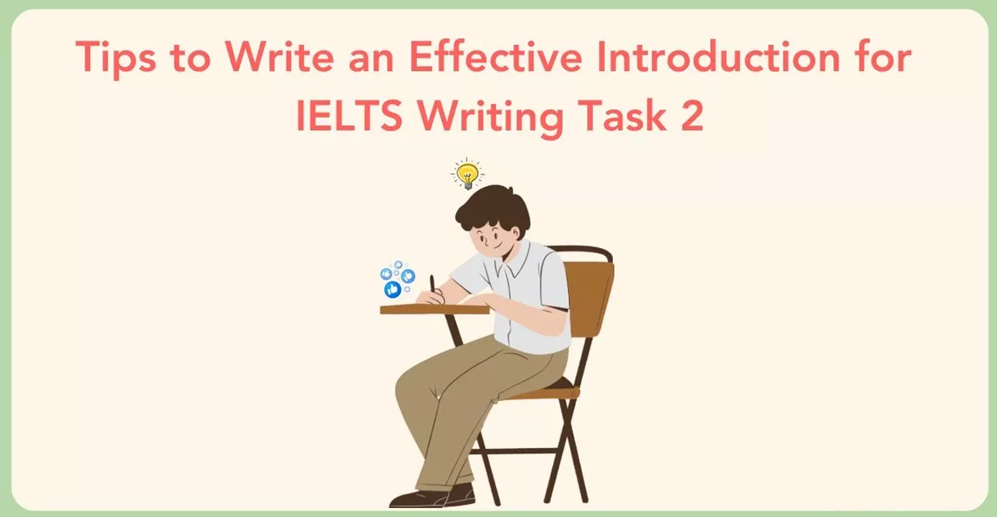How to Write an Introduction IELTS Writing Task 2 – Step-by-Step Guide for Band 7+
Mastering how to write an effective introduction IELTS Writing Task 2 is the key to a high band score. This guide shows you exactly how to paraphrase, give a clear thesis statement, and start your essay strong for Band 7+.
Why Is the Introduction Important in IELTS Writing Task 2?
The introduction is the first thing the examiner reads in your essay, and it sets the tone for your entire response. A strong introduction IELTS Writing Task 2 shows the examiner you fully understand the question and are ready to answer it directly. It also outlines your position or main idea, helping you stay focused and organized throughout your essay. Many test-takers underestimate this small but powerful paragraph, but remember: a clear introduction helps you build a logical structure that is easy to follow. This directly impacts your Coherence and Cohesion band score, which is crucial if you aim for Band 7 or higher.
Even though your introduction IELTS Writing Task 2 is usually just two to three sentences, it plays a big role in boosting your Task Response score as well. It provides a clear thesis statement, which tells the examiner exactly what your opinion is or what your main points are. This makes your essay easier to read and evaluate positively. By mastering how to write a short, clear, and effective introduction, you set yourself up for success in the other parts of the essay too.
How to Write an Introduction IELTS Writing Task 2 (2-Sentence Formula)

Here’s a simple and proven formula for writing an effective introduction IELTS Writing Task 2 every time:
Sentence 1: Paraphrase the question
The first step to writing an effective introduction IELTS Writing Task 2 is learning how to paraphrase the essay question clearly and naturally. Paraphrasing shows the examiner that you understand the topic and have enough vocabulary range to express the same idea in a different way. Instead of copying the question word-for-word — which won’t impress the examiner — rewrite it using synonyms and change the sentence structure if possible.
Tip: Focus on identifying the key nouns, verbs, or phrases in the question and think of accurate alternatives. Also, try starting with phrases like “Many people believe…”, “It is often argued that…”, or “There has been a growing debate about…” to make your introduction sound more academic.
Example – Original question:
“Some people think mobile phones should be banned in public places.”
Effective paraphrase:
“Many people believe that mobile phones ought to be prohibited in public spaces due to their disruptive nature.”
In this paraphrase, “should be banned” becomes “ought to be prohibited” and “public places” is changed to “public spaces”. The added phrase “due to their disruptive nature” provides context, showing the examiner you truly understand the idea.
Sentence 2: Give a Clear Thesis Statement
Once you have paraphrased the question, the second sentence of your introduction IELTS Writing Task 2 should present a clear thesis statement. This is where you directly answer the question by stating your opinion or outlining what your essay will discuss.
Your thesis statement depends on the essay type:
- Opinion essay (Agree/Disagree): Give your clear opinion. Example: “In my opinion, completely banning mobile phones in public places is unnecessary and impractical.”
- Discussion essay: Present both sides and your view. Example: “While some people believe mobile phones should be banned in public spaces, others argue that this would be too restrictive. Personally, I agree with the latter view.”
- Advantages/Disadvantages essay: Mention both sides briefly. Example: “Although banning mobile phones has certain advantages, it also brings significant drawbacks that must be considered.”
- Problem/Solution essay: State the problem and hint at solutions. Example: “Mobile phone misuse in public spaces has caused various issues, but this can be addressed through clear guidelines rather than a complete ban.”
Continuing the example:
“In my opinion, although mobile phones can be distracting, completely banning them in public places is neither realistic nor beneficial.”
A strong thesis statement like this shows the examiner exactly what your position is, which immediately boosts your Task Response score. By combining an accurate paraphrase with a clear thesis, your introduction IELTS Writing Task 2 sets up your essay for a logical, high-scoring structure.
Sample Introductions for Different IELTS Essay Types
1. Opinion Essay (Agree/Disagree)

Question:
“Some people think that governments should invest more in public transportation instead of building new roads. Do you agree or disagree?”
Step 1 – Paraphrase the Question
The goal is to restate the question in your own words without changing the meaning.
Original keywords: “invest more”, “public transportation”, “building new roads.”
Break it down:
- invest more → prioritise
- public transportation → public transport systems
- building new roads → road construction
Keep the subject the same (governments) to maintain clarity.
Change the sentence structure: instead of stating directly, rewrite it as “there has been a growing debate about whether…” to sound more academic.
Full Example Paraphrase:
“In recent years, there has been a growing debate about whether governments should prioritise public transport systems over road construction.”
Step 2 – Give a Clear Thesis Statement
In an Opinion Essay (Agree/Disagree), your thesis statement must clearly state your opinion so the examiner knows exactly where you stand. This boosts your Task Response score.
A strong thesis for this question could start with “Personally, I strongly agree…” or “I firmly believe…” — this is clear, direct, and academic.
Example Thesis Statement:
“Personally, I strongly agree that investing in public transportation offers more long-term benefits.”
Full Example Introduction:
“In recent years, there has been a growing debate about whether governments should prioritise public transport systems over road construction. Personally, I strongly agree that investing in public transportation offers more long-term benefits.”
2. Discussion Essay (Discuss both views and give your opinion)

Question:
“Some people believe children should start school at a very early age, while others think they should begin at least at seven years old. Discuss both views and give your opinion.”
Step 1 – Paraphrase the Question
Your goal is to show the examiner you understand both sides of the argument. This means you should rewrite the question using synonyms and slightly adjust the sentence structure.
Break it down:
- children should start school at a very early age → children benefit from starting school early
- begin at least at seven years old → begin formal education later, around the age of seven
- Identify the subject: children → keep it simple.
- Change the sentence structure: use “Many argue…” or “Some people believe…” to introduce the debate naturally.
Example Paraphrase:
“Many argue that children benefit from starting school early, whereas others feel it is better for them to begin formal education later, around the age of seven.”
Step 2 – Give a Clear Thesis Statement
For a Discussion Essay, you must do two things:
- Show that you understand both views.
- State your opinion clearly.
A simple way is to use “In my view…” or “Personally, I believe…” after showing both sides.
Example Thesis Statement:
“In my view, starting school at a slightly older age is more beneficial for a child’s development.”
Full Example Introduction:
“Many argue that children benefit from starting school early, whereas others feel it is better for them to begin formal education later, around the age of seven. In my view, starting school at a slightly older age is more beneficial for a child’s development.”
Why This Works:
- It paraphrases effectively: “start school at a very early age” → “children benefit from starting school early”.
- It shows both views clearly: Using “Many argue…” and “others feel…” makes the contrast obvious.
- It states your opinion directly: “In my view…” removes any doubt about your position.
- It’s concise: Just two clear sentences — no extra details that belong in the body paragraphs.
For discussion essays, never forget to include your opinion in the introduction and restate it in the conclusion. This consistency is key for Band 7+ in Task Response.
3. Advantages and Disadvantages Essay

Question:
“Do the advantages of studying abroad outweigh the disadvantages?”
Step 1 – Paraphrase the Question
Your goal is to rephrase the question with synonyms and a slightly new structure.
Original: “advantages of studying abroad outweigh the disadvantages”
Break it down:
- advantages → benefits
- disadvantages → drawbacks
- studying abroad → pursuing education overseas or studying in a foreign country
- Structure: Use “has become increasingly popular…” + introduce the debate.
Example Paraphrase:
“Studying abroad has become increasingly popular, but some debate whether its benefits truly outweigh its drawbacks.”
Step 2 – Give a Clear Thesis Statement
For this essay type, you should hint at your position — whether you think the advantages are stronger, the disadvantages are stronger, or they are balanced.
Example Thesis Statement:
“This essay will examine both perspectives and argue that the advantages outweigh the disadvantages overall.”
Full Example Introduction:
“Studying abroad has become increasingly popular, but some debate whether its benefits truly outweigh its drawbacks. This essay will examine both perspectives and argue that the advantages outweigh the disadvantages overall.”
Why This Works:
- Good synonyms: “benefits”, “drawbacks”, “studying abroad” → “pursuing education overseas” (you could vary this further in the body).
- Clear signal of your position: “argue that the advantages outweigh the disadvantages overall.”
- Short and to the point: only two sentences!
4. Problem and Solution Essay

Question:
“Many cities are facing serious air pollution problems. What are the main causes of this, and how can it be tackled?”
Step 1 – Paraphrase the Question
The goal is to rewrite the question using synonyms and a slightly new structure to show you fully understand the topic.
Original:
“Many cities are facing serious air pollution problems.”
Break it down:
- many cities → urban areas worldwide
- serious air pollution problems → severe air quality issues
- Use a reporting phrase to make it more academic: “in recent years…”, “increasingly struggling with…”
Example Paraphrase:
“In recent years, urban areas around the world have been increasingly struggling with severe air quality issues.”
Step 2 – Give a Clear Thesis Statement
For a Problem and Solution Essay, your thesis should show:
- You understand there’s a problem.
- You will propose realistic solutions.
Example Thesis Statement:
“This essay will examine the primary causes of air pollution and suggest effective measures to address this growing concern.”
Full Example Introduction:
“In recent years, urban areas around the world have been increasingly struggling with severe air quality issues. This essay will examine the primary causes of air pollution and suggest effective measures to address this growing concern.”
Why This Works:
- Uses clear synonyms: “serious air pollution problems” → “severe air quality issues”.
- Adds context: “in recent years…” makes it sound more academic.
- The thesis directly signals: “examine the primary causes… suggest effective measures…” → covering both parts of the task.
- Short and direct — only 2 sentences!
Bonus Example (Slightly More Formal):
“Urban centres worldwide are increasingly suffering from serious air pollution. This essay will analyse the major factors contributing to this issue and propose practical solutions to mitigate its impact.”
Key Tips for Problem/Solution:
- Use cause-related verbs: “reasons”, “factors”, “sources”.
- Use solution verbs: “address”, “tackle”, “mitigate”, “solve”.
- Don’t list specific causes or solutions yet — keep details for body paragraphs.
- Keep it clear and simple: 2–3 sentences max.
Tips for Writing a Strong Introduction IELTS Writing Task 2
Writing an effective introduction for IELTS Writing Task 2 is one of the simplest ways to boost your score — yet many test takers overlook it. A strong introduction does more than just start your essay; it shows the examiner that you fully understand the question, can paraphrase accurately, and know exactly how to approach the essay type. Below are essential tips to help you craft introductions that are clear, focused, and score-friendly.

Paraphrase without copying
One of the biggest mistakes students make is repeating the question word-for-word. Examiners expect you to demonstrate that you can rephrase ideas in your own words — this shows range and flexibility in your vocabulary and grammar.
- Use synonyms for keywords: For example, change “governments” to “authorities”, “invest” to “allocate funding”, or “transport” to “transportation systems”.
- Change the sentence structure if possible: Switch from a statement to a passive voice or use a reporting phrase like “there has been increasing debate about…”.
Example: Instead of copying “Governments should invest in transport”, you can write “Authorities are encouraged to allocate more funding to transportation systems.”
Be concise
Your introduction should be short and purposeful. Many students waste time writing long introductions with unnecessary background information or examples. Remember, you only need to:
- Paraphrase the question
- Add a clear thesis statement
Ideally, your introduction should be 2–3 sentences maximum.
Save explanations, reasons, and examples for the body paragraphs where they belong. A concise introduction keeps your essay focused and makes it easier for the examiner to follow.
Be clear and direct
Avoid vague or generic phrases that do not say anything specific. Phrases like “This essay will discuss many things” or “There are many points to consider” sound weak and lower your coherence.
Instead, make your main idea or opinion obvious. For example, say “In my opinion, public transport should be prioritised over new road construction.”
If you have an opinion, state it. If the task asks for a solution, hint at it. This clarity makes it easy for the examiner to see you fully understand the task.
Match your essay type
Different essay types require slightly different introduction styles. Matching your introduction to the question type shows the examiner you know how to structure your answer properly:
- Opinion Essay (Agree/Disagree): Directly state your opinion. Example: “I strongly agree that investing in renewable energy is essential for sustainable development.”
- Discussion Essay (Discuss both views + opinion): Mention both views and your stance. Example: “While some people believe children should start school early, others argue that a later start is better for development. Personally, I support the latter view.”
- Problem/Solution Essay: Identify the main problem and briefly mention you will propose solutions. Example: “Urban areas worldwide are increasingly facing traffic congestion. This essay will examine the causes of this problem and suggest practical solutions.”
- Advantages/Disadvantages Essay: Briefly mention both sides and, if appropriate, signal your view. Example: “Studying abroad has become more common, but opinions differ on whether its benefits outweigh the drawbacks. This essay will argue that the advantages are greater overall.”
A good introduction is like a roadmap — it guides the reader through your ideas and sets a clear direction for the rest of your essay. By paraphrasing accurately, keeping it short, stating your position clearly, and matching the essay type, you’ll start strong and give the examiner confidence in your writing from the very first line.
Conclusion

Writing a strong introduction IELTS Writing Task 2 is one of the simplest yet most powerful ways to boost your essay score and impress the examiner from the very beginning. A well-crafted introduction shows that you clearly understand the question, can paraphrase naturally, and know exactly how to organize your ideas. By using the proven steps in this guide — paraphrasing effectively, giving a clear thesis statement, and matching your essay type — you will create a logical roadmap that helps you stay focused and coherent throughout your essay.
To make your progress even more effective, IELTS Test Pro offers realistic practice tests, detailed scoring, and professional feedback so you can see exactly how strong your introduction IELTS Writing Task 2 is. With real exam-style questions and clear guidance, you’ll know exactly what to improve to reach your target band score.